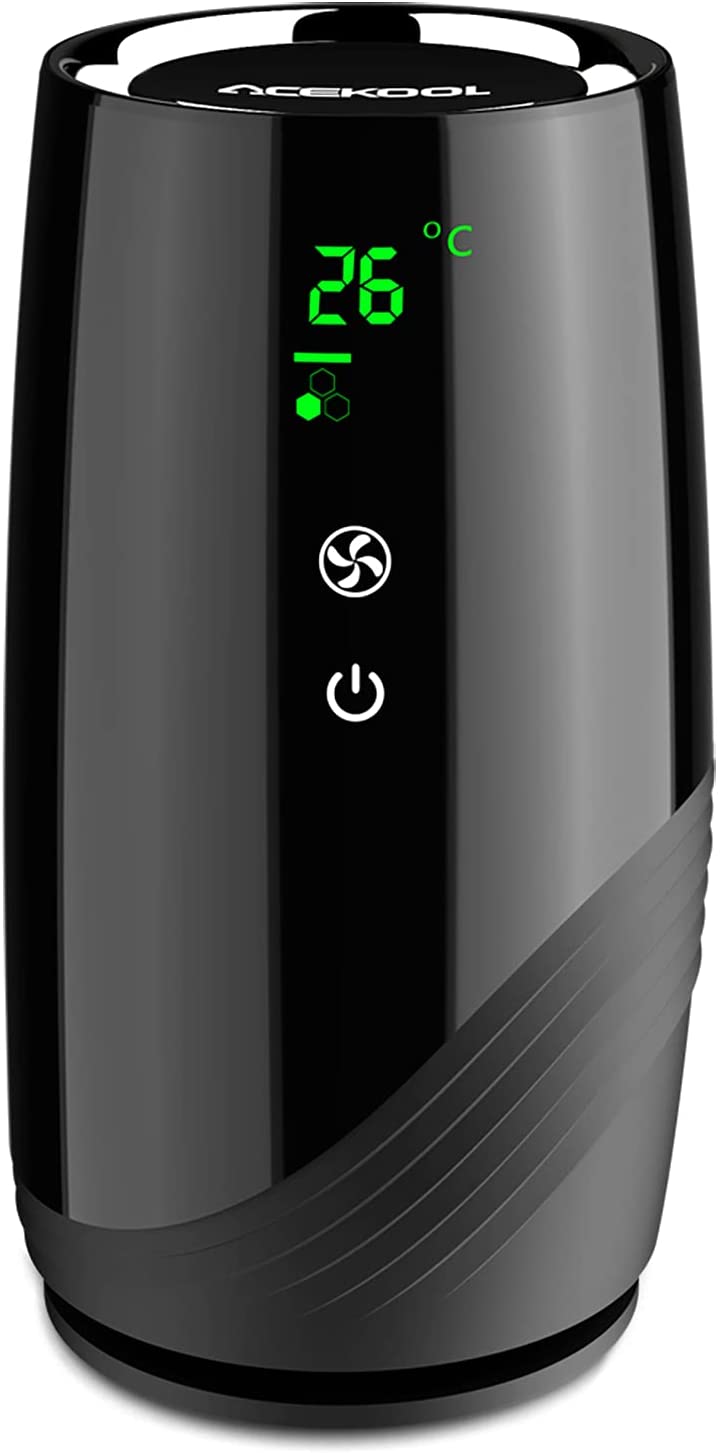Increasing pollution and its consequent air-borne diseases have often left many of you with no choice other than to invest in an air purifier. Well, it’s an essential innovation, which has been perceived to be a new product; however, it was already around for like 200 years. Gradually evolving from masks to an innovative indoor appliance, air purifiers pack the advancements for cleaner air. But before investing in one, it’s also essential to know how do air purifiers work and clean the air.
Since the market has several options for air purifiers, opting for one that is packed with True HEPA filters and other specifications is a must; the ones like Acekool’s Air Purifier D01 and Air Purifier D02.
So, let’s shift our focus to this and understand the functioning of an air purifier.
How Does An Air Purifier Clean The Air?
Honestly, the air inside your house isn’t clean considering the allergens like smoke, dust, mold spores, bacteria, viruses, pet danders, and several other pollutants. Hence, the need for an air purifier. Filtering out all these allergens and pollutants, the air purifier ensures that you inhale clean and oxygen-enriched air.
The Filteration Process
Well, understanding the filtration process of an air purifier even explains how it cleans the air. Built with superior-quality filters, these air purifiers sieve out the allergens particles from the circulating air. As the air flows inside the appliance, the particles get trapped in the filter. Hence, the finer the filter, the better the filtration it offers.
That’s not all! The recent air purifiers are mostly built using HEPA (High-Efficiency Particulate Air) filters. This filter has become the benchmark element, as it can trap almost 99.97% of the airborne particles, especially the ones larger than 0.3 microns in size. In some air purifiers, you’ll even get three filters together for better trapping of microns and allergens. One such product is the Acekool Air Purifier D01, which comes with Pre-Filter, True HEPA Filter, and High-Efficiency Activated Carbon Filter.
Not just that, the HEPA air purifiers sense the air inside the room and offer air exchanges per hour. Take, for instance, Acekool Air Purifier D01 delivers cleaner air at 30-65m3/h, which is nearly 10 square meters. Higher the air exchanges, the cleaner the air becomes! So, opt for one that offers more air exchanges and covers a larger area.
How Polluted is the Air Inside the House and How Does the Air Purifier Help?
Besides, these HEPA filters don’t allow any particles larger than 3 microns, which basically filters out all gases and particulate matter including PM 10 and PM 2.5. The air inside the house mostly contains gases and particles. While PM 10 isn’t that harmful to inhale, as it constitutes dust mite dropping, mold spores, pollen, and pet dander, PM 2.5 is mostly harmful, especially for your lungs, as it includes smoke, viruses, sulfur dioxide, and soot. These particles can travel deep into your bloodstream and impact the functioning of the lungs, resulting in major coughing.
Apart from particulate matters, the gasses present in your indoor air are mostly released from combustion or at times building materials themselves. Mostly these gasses are known as volatile organic compounds (VOCs). Even regular items at your house including cleaning products, pesticides, perfumes, aromatic candles release VOCs, and these are way more harmful to your body than particulate matters. Element such as Radon is one of the most harmful gasses often present in the indoor air. So, to eliminate out these gasses from the air, air purifiers come with carbon filters, which offer natural ventilation at their best.
Filtration Methods
Well, not only is the HEPA and carbon filters fitted in air purifiers are responsible for cleaning the air but it mainly depends on the methods used for the same. Speaking of methods used, there are mainly two, which most air purifiers use – electrical attraction and carbon filtration. However, there are other methods such as UV Light and Ozone.
The Electrical Attraction method works in two ways, wherein the particulate matter is given charge or else the filter media is charged. Mostly, the charged filter is used and these ionic filters trap the particles from the air stream. Another type of mechanism used in air purifiers is the Electrostatic Precipitator, in which both the air particles are charged and then it’s trapped in a space wherein the plates are also charged. Both these two methods have turned out to be the most efficient till date
Keeping aside the Electrical method, the air purifier also uses Carbon Filtration, which removes all unwanted gaseous pollutants from your indoor air. Since the activated carbon holds the power to absorb harmful particles and gases, the activated carbon filters offer enough pore structure, which allows the contaminants to get trapped in these pores. Quite efficient, the activated carbon filter offers maximum possible exposure so that all harmful gases are wiped out of the room leaving behind clean air.
UV Light and Ozone, which are used in air purifiers for more effective purification, are often included alongside other filters. UV Light is mostly used for biological organisms while ozone works to eliminate odor from the air. Hence, air purifiers built with the combination of UV Light or Ozone with Carbon Filter and Electrical Attraction offers better cleaning of the air, eliminating all allergens and contaminants including viruses and bacteria.
In Conclusion
Besides, installing such air purifiers will leave you in a cleaner surrounding and eventually a healthy body. Also, no need to get stressed about disturbed sleep due to noises from these air purifiers, as some purifiers work noiselessly and senses the humidity and temperature inside the room every few seconds. Owning such an air purifier can truly ensure cleaner air throughout, especially in the present COVID-19 pandemic time.
So if you have been wondering how does an air purifier cleans the air, the above-mentioned information should help you. And go on to choose one wisely based on the cleaning mechanism, filters, and other specifications for a cleaner, healthier home.
More to read:
Best Air Purifier in the U.S. for Better Respiratory Health 2021
Best Hand Blender in the U.S. That You Must Check Out 2021
Best Toasters in the U.S. That Are Worth Buying 2021




